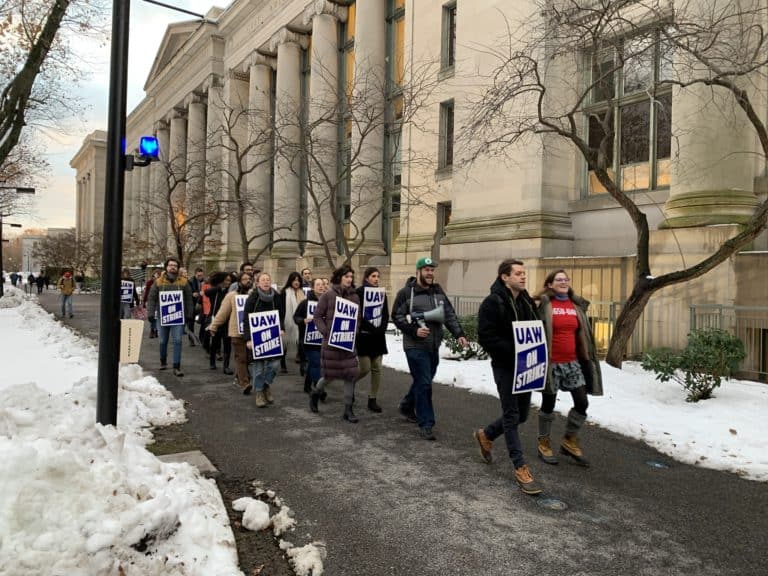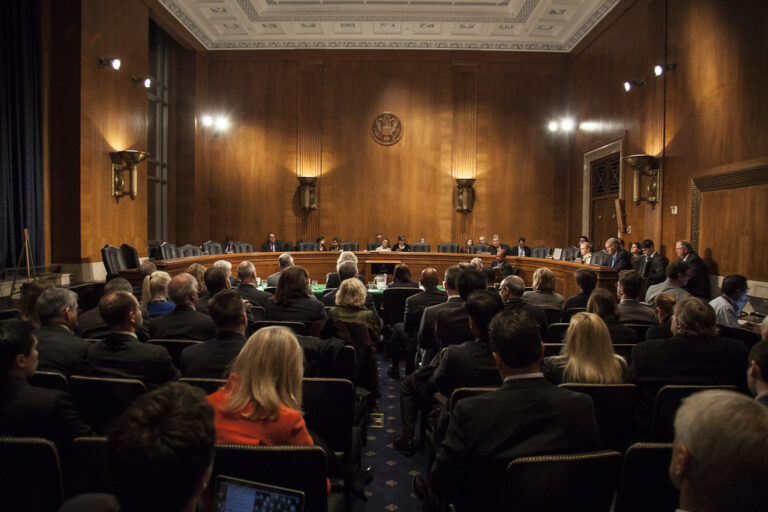The New York Times editorial board questioned world financial institutions’ macroeconomic policies in an editorial entitled “Recovery for Whom?” Because of the economic plight facing young jobless Millennials, there may be a generation facing insurmountable financial odds—the Times writes that “starting one’s work life in a poor economy can translate into lower earnings and less career attainment over a lifetime.” The editorial board urges the government to promote “a fair and functional economy” where “the government plays a robust role, alongside consumers and businesses, to promote full employment and to ensure a just distribution of gains.”
The New York Times examined executive compensation in-depth this weekend with an article on the extremely high rates of American executive pay, as well as an article detailing the methodology behind the figures stated in the article. Calling executive pay “supersalaries,” the Times discusses the imperfect incentive structures behind current executive compensation schemes and the large inequities between CEO pay and average worker compensation. The article further discusses the effect that the new Dodd-Frank Act CEO-to-average-salary pay ratio disclosure that will enter the public discourse in the coming months—though critics of current executive compensation believe that publication of the ratio is a step in the right direction, most favor harsher methods to monitor executive compensation like higher tax rates and binding say-on-pay votes.
The Wall Street Journal reports that a national transportation workers labor strike has “crippled” Argentina. General Confederation of Labor, led by former truck driver Hugo Moyano, protested high inflation and anti-worker government policies through a nationwide strike on Thursday, April 10. After Argentinean President Christina Kirchner’s term ends in 2015, Moyano will continue to be a key political player in the regime of her successor. The WSJ states that “for Mr. Moyano, the strike is a way of signaling to presidential hopefuls that he will play an important role in post-Kirchner Argentina.”
A Los Angeles Times editorial urges Congress to “extend jobless benefits again.” The L.A. Times editorial board writes that the technical challenges in reinstating and retroactively renewing unemployment benefits “aren’t insurmountable.” Federal jobless benefits kick in after state benefits are exhausted, typically after six months. Federal benefits gradually shrink as the economy in each state improves—consequently, the average amount of federal aid fell from 59 weeks in January 2012 to 29 weeks in December 2013. Congress let the federal program expire in December 2013, cutting off aid to 1.3 million unemployed Americans. The editorial urges political compromise between Congressional Republicans and Democrats, since “both sides should be willing to let [a federal unemployment] program fade out as each state’s employment picture brightens, rather than fighting every few months over temporary relief.”
After this week’s NLRB hearing on streamlining the union election process, The Wall Street Journal reports that there were evident policy divides present at the hearing. The Wall Street Journal reports that about “three dozen people“ testified on Thursday and dozens more presented Friday as part of the two-day hearing, including “representatives for unions in the construction, retail, and food industries and lawyers for business trade groups such as the National Association of Manufacturers and the U.S. Chamber of Commerce.” Additionally, eighteen Republican senators filed a comment to the board this week, claiming that the proposal “poses significant harm to businesses and workers.”
The New York Times reports that the union representing 30,000 New York City building service employees has reached a tentative labor deal with the Realty Advisory Board on Labor Relations, the association that represents building owners. Avoiding what would have been the building employees’ first strike in over 25 years, the parties agreed to a pay increase allowing an employee in a unionized building to earn $49,402 salary by 2018. In New York City, “building service positions have long been viewed as solid positions that allow immigrants and residents with limited education a middle-class life.”
The Wall Street Journal’s Law Blog reports that law firm “hiring sprees of the mid-2000s, when firms brought on vast armies of associates, are unlikely to return in the near future.” Jim Leipold, Executive Director of the National Association for Law Placement stated in the National Law Journal that “we’re not going back to 2006 anytime soon.” However, there may be hope on the horizon—the Wall Street Journal reports that employment figured for the class of 2013 by the American Bar Association showed a modest improvement while first-year-enrollment at law schools has plunged, which should “lessen the flood of newly-minted law graduates.”
New York Times guest editorial contributor Steven Rattner writes that in the wake of the recent financial crisis, young Americans should be forced to save for retirement. He writes that “only 43 percent of eligible workers under 25, and 62 percent of those between 25 and 34 participate in 401(k) plans, compared with 70 percent or more of those over 45. And the young contribute less — 4.3 percent of income for those under 25 and 5.5 percent for ages 25 to 34.” Rattner proposes limiting the “looming crisis via a radical restructuring of our retirement plans, including mandated savings.”






Daily News & Commentary
Start your day with our roundup of the latest labor developments. See all
November 25
In today’s news and commentary, OSHA fines Taylor Foods, Santa Fe raises their living wage, and a date is set for a Senate committee to consider Trump’s NLRB nominee. OSHA has issued an approximately $1.1 million dollar fine to Taylor Farms New Jersey, a subsidiary of Taylor Fresh Foods, after identifying repeated and serious safety […]
November 24
Labor leaders criticize tariffs; White House cancels jobs report; and student organizers launch chaperone program for noncitizens.
November 23
Workers at the Southeastern Pennsylvania Transportation Authority vote to authorize a strike; Washington State legislators consider a bill empowering public employees to bargain over workplace AI implementation; and University of California workers engage in a two-day strike.
November 21
The “Big Three” record labels make a deal with an AI music streaming startup; 30 stores join the now week-old Starbucks Workers United strike; and the Mine Safety and Health Administration draws scrutiny over a recent worker death.
November 20
Law professors file brief in Slaughter; New York appeals court hears arguments about blog post firing; Senate committee delays consideration of NLRB nominee.
November 19
A federal judge blocks the Trump administration’s efforts to cancel the collective bargaining rights of workers at the U.S. Agency for Global Media; Representative Jared Golden secures 218 signatures for a bill that would repeal a Trump administration executive order stripping federal workers of their collective bargaining rights; and Dallas residents sue the City of Dallas in hopes of declaring hundreds of ordinances that ban bias against LGBTQ+ individuals void.